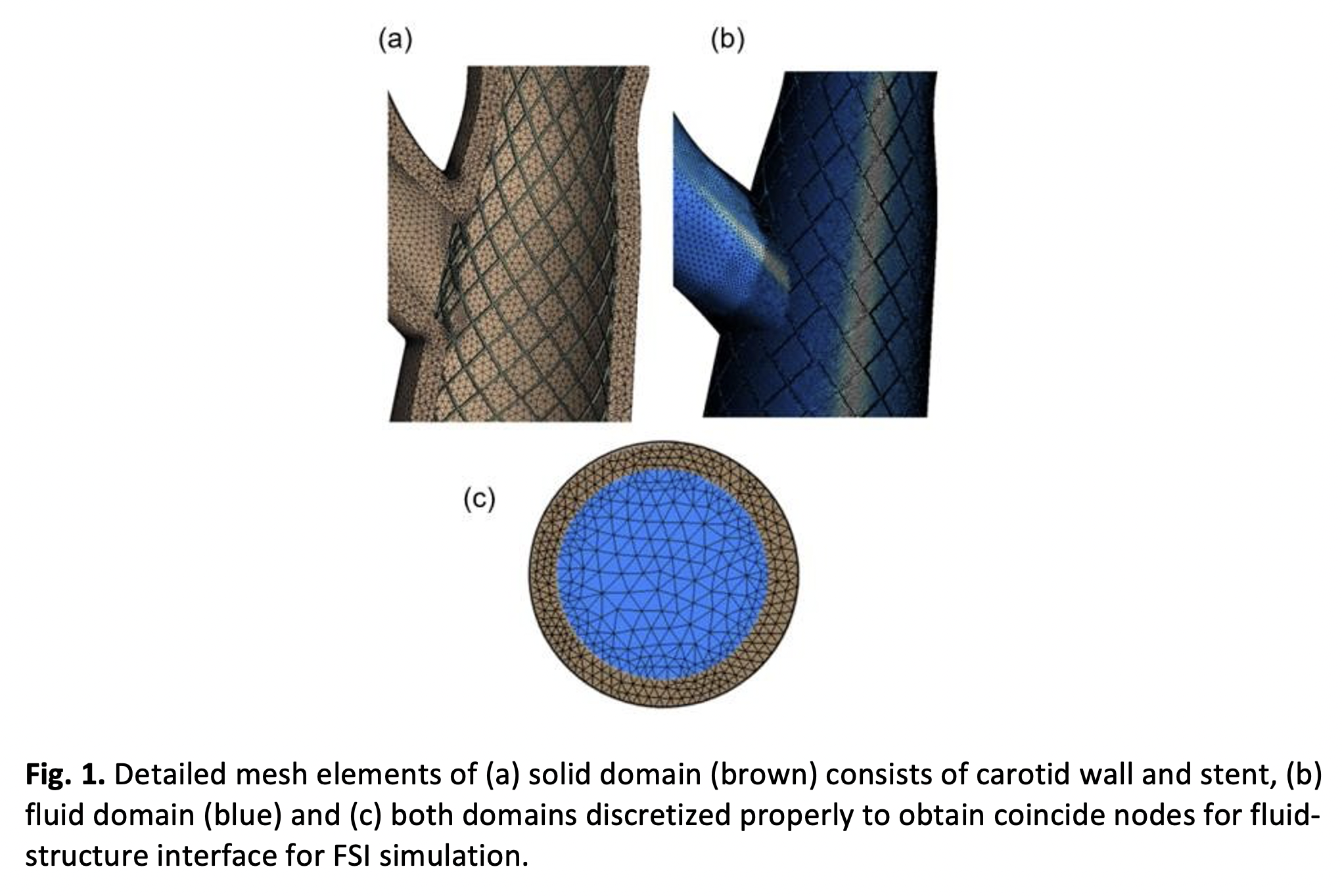Fluid-Structure Interaction Study of The Effect of Stent on Local Hemodynamics Parameters at The Stented Carotid Artery Bifurcation
DOI:
https://doi.org/10.37934/araset.28.2.247255Keywords:
Fluid-structure interaction, carotid artery stenting, restenosis, hemodynamicsAbstract
Previous fluid-structure interaction (FSI) studies on carotid bifurcation focused on the effect of wall compliance on the predicted hemodynamic features in normal or atherosclerotic carotid arteries. However, FSI study on patient-specific post-stent carotid model is still lacking, and to the authors knowledge no such a study has been reported so far. This study attempts to simulate the full-scale patient-specific post- stent carotid bifurcation geometry with the hope to understand the effect of wall compliance on hemodynamic quantities. The FSI model was based on patient-specific geometry consisting of three components i.e., the carotid artery wall and stent as the solid domain, and blood in the fluid domain. Full FSI simulations incorporating patient-specific boundary conditions at the inlet and outlets, and realistic homogenous incompressible carotid wall and stent were completed to evaluate the flow patterns and wall shear stress. The FSI simulation results were compared with the corresponding rigid-wall model. The quantitative difference in time-averaged wall shear stress (TAWSS) distribution between the FSI and rigid-wall models shows that FSI model predicted 8% less of the area in the low TAWSS band (<0.4%) compared 0.4 - 1.2 Pa. The results suggest that although the effect of wall compliance on flow patterns in the patient-specific post-stent carotid model is negligible, its quantitative effect on wall shear stress may not be trivial and should be considered in future studies.
Downloads
Download data is not yet available.

Downloads
Published
2022-10-27
Issue
Section
Articles



























